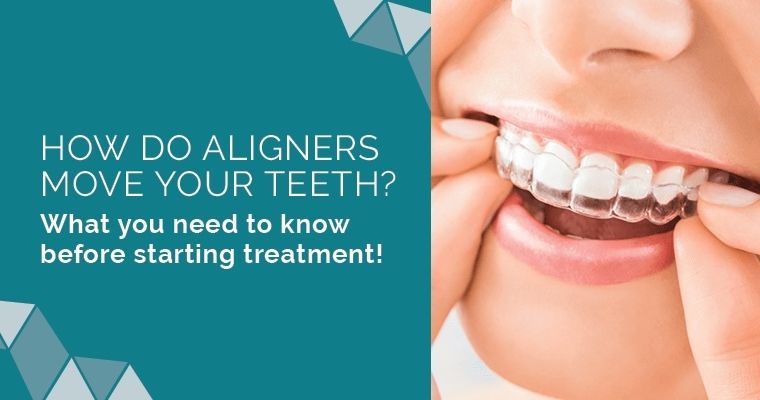Legacy Orthodontics - An Overview
Legacy Orthodontics - An Overview
Blog Article
Legacy Orthodontics Can Be Fun For Anyone
Table of ContentsNot known Details About Legacy Orthodontics Top Guidelines Of Legacy OrthodonticsFascination About Legacy OrthodonticsUnknown Facts About Legacy OrthodonticsFacts About Legacy Orthodontics Uncovered
At Advanced Orthodontics, we give patients with a alternative therapy experience. In enhancement, we provide adjustable treatment timetables, adaptable repayment choices and an enjoyable, enjoyable experience. invisalign. Phone call ( 480) 357-4900 today for more details and routine a consultation.An orthodontist is a dental professional trained to detect, protect against, and treat teeth and jaw abnormalities. Orthodontists function with individuals of all ages, from youngsters to adults.
Malocclusion, or misaligned teeth, can result in oral problems, consisting of dental caries, gum illness, and challenging or agonizing chewing. However not every person is birthed with straight teeth. If you have a poor bite or large spaces between your teeth, you may intend to speak with a dentist focusing on orthodontic care.
7 Easy Facts About Legacy Orthodontics Explained
( Image Credit History: DigitalVision/Getty Images) Orthodontists make use of fixed and detachable oral gadgets, like braces, retainers, and bands, to change the setting of teeth in your mouth. Orthodontic treatment is for oral problems, consisting of: Jagged teethBite problems, like an overbite or an underbiteCrowded teeth or teeth that are as well far apartJaw misalignmentThe goal of orthodontic treatment is to enhance your bite.
While you could believe of orthodontists as generally for youngsters or young adults that require braces, they can correct dental problems at any age. Orthodontists go to college, dental institution, and orthodontic institution.
All orthodontists are dentists, but not all dentists are orthodontists. Orthodontic residency programs offer extensive, concentrated instruction for oral professionals. They focus on two locations: Just how to correctly and safely move teeth How to properly guide development in the teeth, jaw, and faceOnce an orthodontist has completed training, they have the option to become board accredited.
Some Of Legacy Orthodontics
Misalignment, or malocclusion, is one of the most usual factor individuals see an orthodontist. It is hereditary and is the outcome of size differences between the top and lower jaw or in between the jaw and teeth. Malocclusion results in tooth congestion, an askew jaw, or irregular bite patterns. Malocclusion is generally treated with: Your orthodontist attaches steel, ceramic, or plastic square bonds to your teeth.
If you have just small malocclusion, you may be able to use clear dental braces, called aligners, as opposed to standard dental braces (https://issuu.com/legacyortho). Some people require a headwear to help relocate teeth right into line with stress from outside the mouth. After braces or aligners, you'll need to use a retainer. A retainer is a customized device that keeps your teeth in area.
They can develop additional space in the mouth without having to draw teeth. Orthodontists make use of wires, medical screws, or plates to sustain your jaw bone.
You might need to see an orthodontist if you have: Crowding or not adequate room for every one of your teethOverbite, when your upper teeth come by your base teethUnderbite, when your base teeth are also far forwardSpacing or problems with gapsCrossbite, which is when your top teeth fit behind your bottom teeth when your mouth is closedOpen bite or a vertical gap between your front bottom and top teethMisplaced midline, when the center of your bottom and upper teeth don't line up Correcting a dental malocclusion can: Make biting, eating, and speaking easierImprove the balance of our face and your total appearanceEase discomfort from temporomandibular joint conditionsDifferent your teeth and make them simpler to clean up, aiding prevent dental caries or dental caries It's frequently a dental professional who initially notifications misaligned teeth during a regular test.
Getting My Legacy Orthodontics To Work

Throughout your initial orthodontic assessment, you'll likely have: An oral examPhotos taken of your face and smileDental X-raysPanoramic (360 degree) X-rays of your face and headImpressions to develop molds of your teethThese tests will aid your orthodontist know how to wage your treatment. leesburg braces. An orthodontist is a dental expert who's had training to treat your teeth and jaw
Orthodontists might execute surgical treatment, exams,X-rays,and more to assist you obtain a much more comfy, much healthier smile. An orthodontist is concentrated on your bite, so something like a broken tooth would be dealt with by a dental practitioner. Orthodontists are dentists yet not all dental practitioners are orthodontists. Orthodontists are concentrated on your bite, or the means your teeth fit with each other, and the straightness of your teeth.
Ever asked yourself how stars constantly seem to have perfectly lined up teeth? Orthodontists are oral professionals who focus on remedying abnormalities in the teeth and jaws.
Examine This Report about Legacy Orthodontics

While braces are the most generally recognized orthodontic treatment, orthodontists have a varied toolkit at their disposal. The details method selected relies on the severity of the situation, the individual's age, and specific choices. These reliable dental braces utilize a system of braces bonded to the teeth and connected by cables.
Clear aligners, like Invisalign, are a preferred alternative for clients seeking an extra very discreet therapy alternative. These removable trays are tailor-made to progressively shift the teeth's position. Headgear might be made use of in combination with dental braces or aligners to use added targeted pressures, specifically for dealing with jaw disparities. In cases of slim jaws, palatal expanders can be made use of to produce space for proper tooth positioning.
Report this page